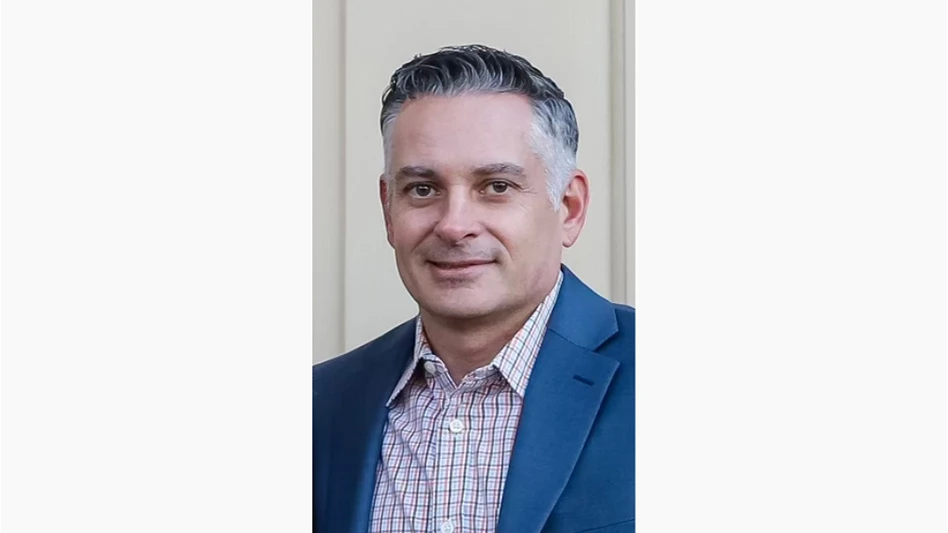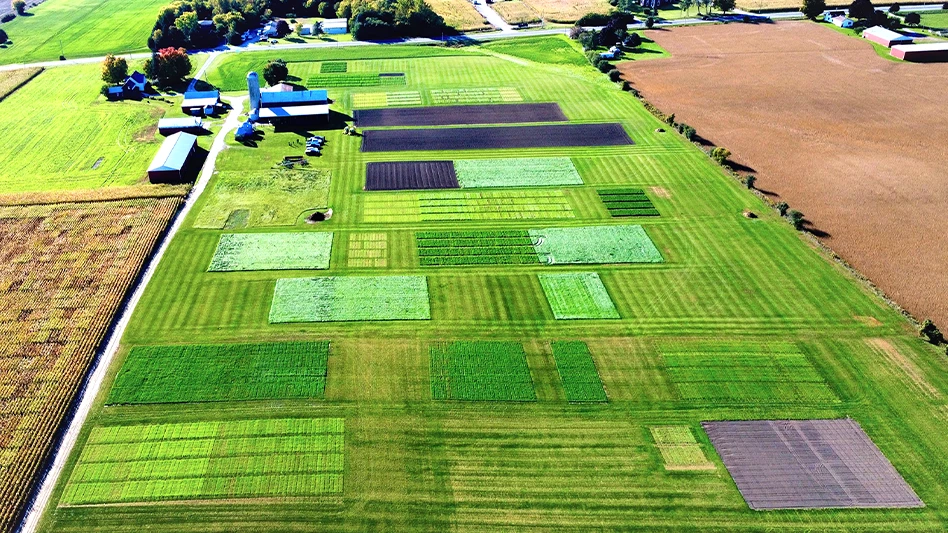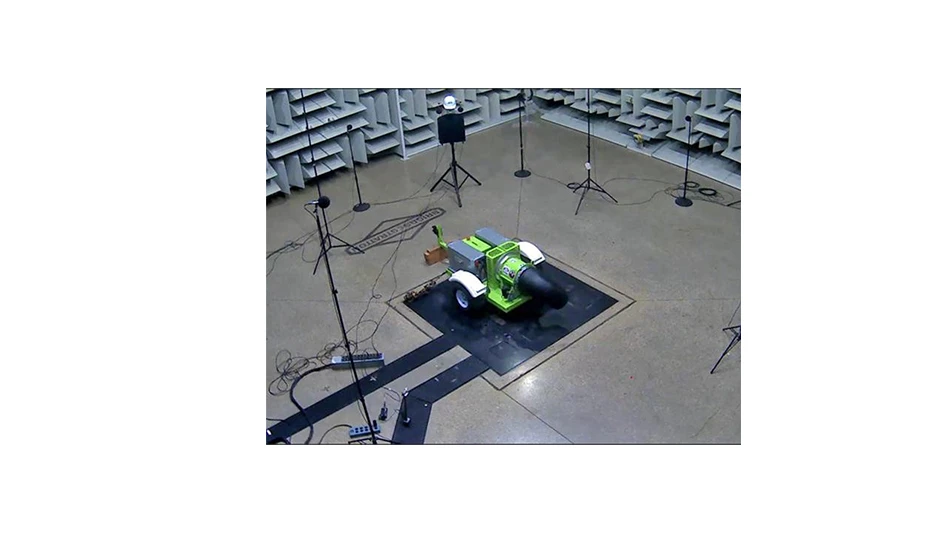
In the movie “We Bought a Zoo”, the handsome Matt Damon plays Benjamin Mee, who purchased a dilapidated zoo and prepared to reopen it for the public. It’s a great family movie and loosely based on a true story.
In our own true-life story, we bought a shuttered golf course in southwestern Michigan. Similar to Mr. Mee, this was a family decision with all family members committed, all family resources committed and many dark moments to question the sensibility of this decision.
In 2016, a local 18-hole public course was closed with no care to the 107 acres. As my husband and I drove by the property in 2017, we watched the weeds take over the greens, the fairways turn into a hayfield and large tumbleweeds form in the bunkers. My husband, Jaime, and I began the process to acquire the property and prepare it for reopening. Time was of the essence, with turf loss taking place as the greens, tees and fairways sat dormant.
What was on our family résumé that would make us qualified to run and operate a golf course? Nothing. Similar to the role portrayed by Matt Damon, there were times of financial failure, questions of rationale and near ruin, with enough moments of forward progress to continue.
What possesses a family to make this decision? A strong dose of hard work — and in our case, a pinch of agronomy knowledge, a bit of ignorance, a measure of naïveté, and a strong amount of commitment.
What has been our journey during the first four years of operation at Spruce Ridge Golf Course? During our first season, only the back nine holes were opened, as those greens fared better in the time of no care. Of course, there were many days of empty tee sheets, when play was consistent with the conditions of the course. In Season 2, all 18 holes were open but with temporary holes on the front nine’s sandier greens that still looked more like a bunker than a green. Again, there were many days of empty tee sheets. In Season 3, all 18 holes were open with no temporary greens, but those sandier greens still did not have full coverage and big holes were placed on a third of the holes. Fortunately, play increased as putting became more bearable. In Season 4, the big hole cups were removed and all greens were puttable, with the tee sheet reflecting the conditions of play.
The community responded favorably to the course being purchased for golf and not being shuttered completely, but that did not translate to customers walking in the door and the cash register ringing. Even though the rate was driving range prices — as we were realistic that the golfers would be unsatisfied putting — the customers did not walk in the door.

Lessons learned so far:
1. This is not glamourous work. My husband and I have a running joke when we are doing the dirtiest of work, where we say to each other, “Isn’t it glamourous owning a golf course?” Whether it is trash duty, tree removal in the winter, snaking out a toilet, stump removal, filling the porta potty with toilet paper, cart path cleanup, aerarating, seeding, fertilizing, spraying, picking up pinecones, picking up sticks or washing carts, there is always work to do. And, as a mom-and-pop organization, sometimes there is nobody to assign the job to except yourself.
2. The customer is always right, but not everyone is your customer. A family friend reminded us of this at the start of our business. It applies during a moment from our fourth season, when a customer asked for a refund when it was 80 degrees and sunny at 4 p.m., which was denied. Of course, the customer threatened to never return to golf at the property …
3. Thick skin is required. The pin placement is off. The greens are too slow. The greens are too fast. Fairways are too narrow. There are too many trees. There’s not enough shade. The par 3s are too long. The course is too short. Need better signage.
Then you get that one Google review that you MUST post in the maintenance barn to let the crew know that their hard efforts are noticed: “Used to play our league here. I’d heard that it closed but then was part of a scramble that was played at Spruce. The challenge here is risk vs. reward. The course isn’t terribly long but demands that you be straight. For longer hitters the Par 4’s are drivable for the most part. However, if you aren’t straight, you can go from a birdie or par chance to a double in a single shot. Lots of breaks you really have to read. Despite being at the end of 12 scorching days, the course was not burned out in the least. Very well kept and maintained. If you’re in the area and want to play a great round of Michigan golf, I’d definitely recommend Spruce Ridge.”
No, this wasn’t written by a family member or friend, nor was it paid for, nor was it solicited. If it was appropriate to send “xoxoxo” as a reply, I would have done that. For a Google review to discuss strategy at your course and acknowledge what Mother Nature brings at you, it just reminds you there are golfers who do notice and will provide an unsolicited positive and realistic review.
4. You need a supportive golf community. We learned early on that golf course owners and superintendents are supportive. That was surprising. Whether it was words of encouragement from local golf course operators, cart loans from a competing golf course, equipment or instrument loans from a competing golf course, an offer to sell us a piece of equipment that we desperately needed, we have been pleasantly surprised to find that the golf course community is inclusive.
5. You need to play your own course … and other courses. Play your own course, whether to interact with your customer base, or see the golf course from an angle other than from atop a mower, tractor or truckster, or from behind the push mower, drop spreader, seeder or line trimmer. But also play other courses. My husband and I continue to play the outings we played prior to owning a course. It is easy to get caught up in what is not getting done, still growing in, or still repairing at your own course, as it is your job to be critical as you work to improve the course. But when you play another course, you can see that we all have our challenges — as you observe a hydraulic leak on a green, a fallen tree limb or cart breakdowns. It’s a great reminder that we are all struggling with managing a natural habitat, dealing with equipment failure and meeting golfers’ expectations on a budget.
6. Don’t give up. In four years of ownership, we have survived temporary closure due to COVID-19, tax appeal, cart lease dispute, neighbor boundary dispute, theft, trespass, equipment breakdown, irrigation leak, lack of employees and more. BUT … it is rewarding work. Whether growing grass — or, as we said at the start, killing less grass — watching animals claim your property as their habitat, or enjoying the sunrises and sunsets, there truly is no better office than a 107-acre playground.
As the late businessman and owner of the NFL’s Chargers Alex Spanos said, “The best way to learn is by doing. The only way to build a strong work ethic is getting your hands dirty.” In doing this unglamourous work, we have managed to return a golf course to a playable surface, we have gained friendships with customers, employees and sales representatives, and we have even had some good times in the process.
We bought a golf course? Yes, we bought a golf course!
Get curated news on YOUR industry.
Enter your email to receive our newsletters.
Explore the December 2021 Issue
Check out more from this issue and find your next story to read.
Latest from Golf Course Industry
- GCSAA announces Grassroots Ambassador Leadership Award recipients
- Reel Turf Techs: David Gummo
- PBI-Gordon promotes two to executive level
- VIDEO: A First Green morning
- Bloom Golf Partners adds HR expert
- Seeking sustainability in Vietnam
- Kerns featured in Envu root diseases webinar
- Toro continues support of National Mayor’s Challenge for Water Conservation







